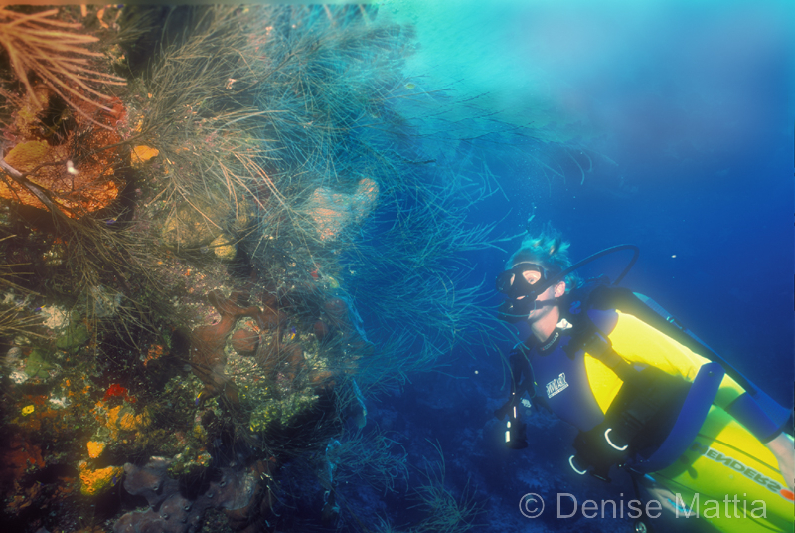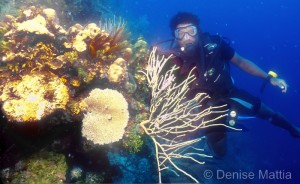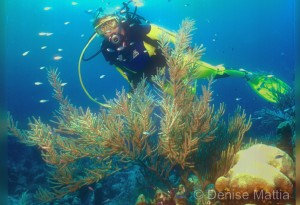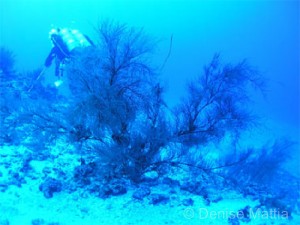
By Denise Mattia
For years, vacationers saw shiny, ebony trinkets featured at roadside stands and boutiques on every island around the world. These trinkets weren’t gemstones, crystallized minerals or chunks of polished wood; they were pieces of black coral and they once were animals living in the sea.
What snorkelers and divers perceive of as a solid rock underwater is actually thousands of polyps, each of which have an oral cavity. Individuals that are attached to each other become a colony of coral, whose life is sustained by sharing food. These colonies grow on the skeletal remains of dead, calcified coral, on volcanic rocks, sunken ships and even tires from cars. They’re unaffected by gravity and will always grow perpendicular to the surface on which they’re attached. Long chains of coral form barrier reefs, which protect the land.

Coral grows horizontally and vertically and will always grow perpendicular to the surface on which it is attached
Among the soft, branching variety, only black coral has a horny central skeleton composed of proteins, which classifies it separately. It’s brownish or greenish under water and it becomes pitch black when dried and polished.
Centuries ago Black coral was carved into shiny amulets to “protect” the wearer from ghosts, storms and lightning. Talismans of black coral were worn in ancient Rome to avert the forces of the “evil eye.” In the Indian Ocean it was called the king’s coral, and it was used as scepters for native kings and ameers. Closer to home, Navajo ceremonial sand paintings depicted gods with necklaces of black coral, thought to protect their people against evils from the north. With centuries of continual harvesting of black coral, which can take 30 years to grow, it’s astounding that these animals have survived to modern day. Thanks to conservation efforts it has.
The continuing pressure of associations around the world has placed black coral trinkets on the endangered species list, and, with the help of divers and dive guides, these animals will live forever to adorn only the sea.
About Denise Mattia
A writer and photographer, Denise Mattia’s works are published nationally and internationally and include all aspects of leisure travel: art , culture, resorts, spas, food and wine and sports’ activities. She's the founder of the soon to be launched Yum-Yum-Traveler, a site devoted to reviewing restaurants in addition to her travel articles from around the world. She lives and works in Manhattan, where she was born.
- Web |
- More Posts (91)



